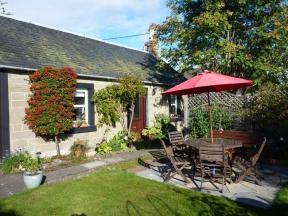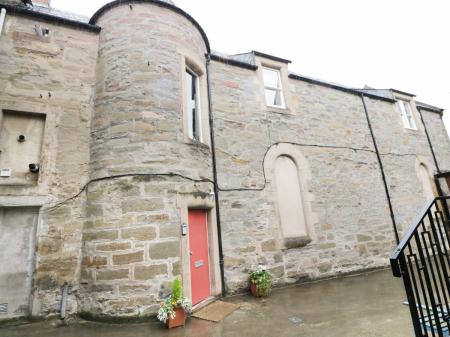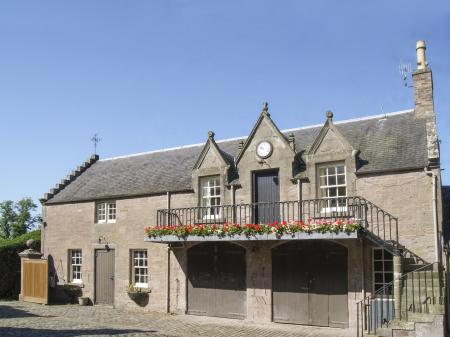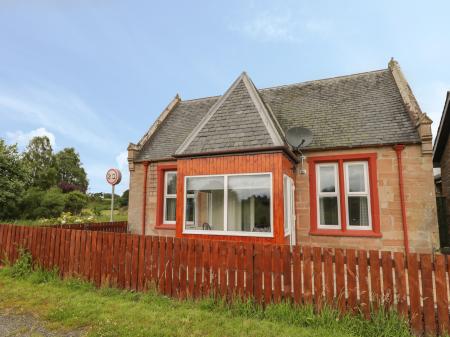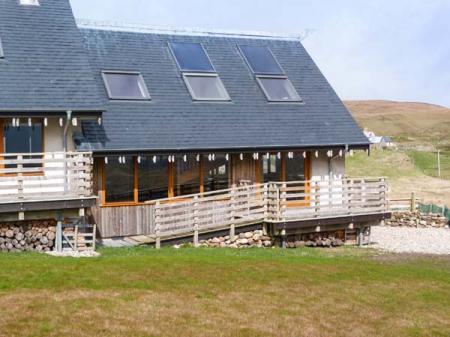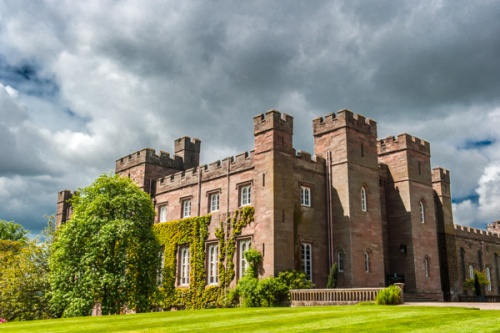
History
You could say that the history of Scone is the history of Scotland. The Romans established a marching camp here as part of their attempt to extend their British territories into present-day Scotland.
After the Romans eventually retreated behind Hadrian's Wall, Scone became an important centre of a Pictish kingdom, and when the Picts began to convert to Christianity after 600 AD Scone became an important Christian centre as well. The Pictish kings were crowned at a place called Caislean Credi (Hill of Credulity), which is now Moot Hill, just opposite the Palace entrance.
Sometime during the 7th century, a community of Culdee monks was established here. The Culdees lasted until 1114 when Alexander I founded a new Augustinian Abbey at Scone. Long before then, Scone had become important not only as a religious centre but as the place where kings were crowned.
Sometime around 830 AD Kenneth MacAlpine was crowned at Scone, as the first real king of what could be called Scotland. Before MacAlpine, the Scottish kingdom took in the south west of modern Scotland, but pressure from invading Vikings drove the Scots east into the Pictish kingdoms.

According to tradition, MacAlpine invited a Pictish king named Drostan to a feast at Scone, and there the Picts were feted with food and drink before the Scots turned on their guests and slaughtered them all. Kenneth MacAlpine also brought the Stone of Destiny, the traditional coronation stone used by the Scots, to his new territory at Scone, where it became known as the Stone of Scone. The Stone of Destiny is a block of red sandstone, said to have been used by St Columba as his travelling altar.
The Stone of Destiny made Scone the political and religious centre of the Scottish kingdom throughout the medieval period. Parliaments were held here, kings crowned, and important decisions made at Scone. Each new law enacted at Scone was marked by the tolling of the abbey bells. Though it was not an official capital of the Scottish realm, it was the soul of the kingdom.
Perhaps the most memorable coronation in Scottish history took place here in 1306 after Robert Bruce killed his great rival for power, John Comyn. Bruce needed to legitimise his claim to the throne quickly, so he rode to Scone to be crowned king.
Tradition held that the crown should be placed on his head by the Earl of Buchan. However, neither Buchan nor the actual crown was at Scone, so a circlet of gold was used instead, and was placed on Bruce's head by Isobel, Countess of Buchan, and, not coincidentally, Bruce's sister.
So important was the Stone of Destiny in Scottish tradition, and so closely was it associated with the power of the Scottish kings, that Edward I captured it during his numerous attempts to subdue the Scots, and took it back to London. There it was set under the official coronation chair in Westminster Abbey so that each subsequent king or queen was crowned while sitting over the Stone.
On Christmas Day, 1950 a group of Scottish students stole the Stone from underneath the chair and carried it back to Scotland. The uproar over the theft - or return of the Stone to its rightful place if you prefer - was such that the government eventually agreed to return the Stone permanently, and legally, to Scotland. The original Stone is held at Edinburgh Castle, but an exact replica stands upon Moot Hill, where the real Stone of Destiny sat for so long.

A Fake Stone of Destiny?
Well, maybe. There's an intriguing side note to the story of the Stone of Destiny. Persistent rumour suggests that the Stone that Edward I captured was not the original, and that when the Scots knew the English were coming they hid the real Stone of Destiny and replaced it with a fake Stone.
The theory may be valid, for the Stone is of a type readily found in the area of Scone, but since the Stone originally came from the south-west of Scotland, surely it would be of a different material?
If the theory is true, it means that the Stone upon which dozens of monarchs were crowned in Westminster Abbey was a fake. But then, where did the Scots hide the real Stone? No one knows for certain, but that's what makes it such a good historical mystery.
The final coronation at Scone took place in 1651 when Charles II was crowned King of Scots.
After the Scottish Reformation put an end to the Augustinian Abbey at Scone, the Ruthven family acquired the estate and built an imposing fortified residence around 1580. The Ruthvens could not steer clear of political conspiracy, however (see Huntingtower Castle) and the property was seized by the crown and ended up in the hands of the Murray family.
The Murrays supported the Jacobite cause, and the 5th Viscount Stormont hosted The Old Pretender at Scone Palace during the 1715 rebellion. The Viscount was imprisoned for his actions, and so was his heir, the 6th Viscount, after his sisters hosted Bonnie Prince Charlie in 1745.

The Palace
In 1802 the 3rd Earl of Mansfield brought in William Atkinson to completely remodel his ancestral home in the fashionable Gothic Revival style. Atkinson would later design Abbotsford for Sir Walter Scott, but at Scone he designed a romanticised 19th-century version of a medieval palace, incorporating parts of the 16th-century house. The village of Scone got in the way of landscaping the grounds, so the entire village was moved 2 miles away.
The result is magnificent; a luxurious stately home that showcases the Murray treasures. Among these treasures are the pieces of fine art brought back to Scone by the 2nd Earl of Mansfield during his long career as a foreign diplomat.
From porcelain to fine furniture, clocks to ivory carved from elephant and walrus tusks, Scone is filled with a wonderful display of luxurious furnishings. One highlight is a collection of papier mache objects from 18th century France. The furniture includes a set of Louis XV armchairs and a table made for Marie-Antoinette. There are also pieces of embroidery stitched by Mary, Queen of Scots.

The Gardens
Immediately opposite the front visitor entrance at Scone is the Moot Hill, with a replica Stone of Destiny on the top. Beyond the Stone is a delightful Presbyterian Chapel where Murray family tombs line the walls. A short walk through the gardens brings you to a 16th-century arch that was the grand entrance to the village, and a Mercat Cross.
Within the grounds is a pinetum, containing giant redwood and fir trees. Some of the firs are Douglas Firs, named for David Douglas, a famous plant explorer who was born in Scone village and served as a gardener here before embarking on his explorations around the world.
Visiting
I've been to Scone Palace twice, and each time come away awed by both the splendour of the Palace interior, but even more by the atmosphere of history and the sense that you're visiting somewhere very, very special.






 We've 'tagged' this attraction information to help you find related historic attractions and learn more about major time periods mentioned.
We've 'tagged' this attraction information to help you find related historic attractions and learn more about major time periods mentioned.